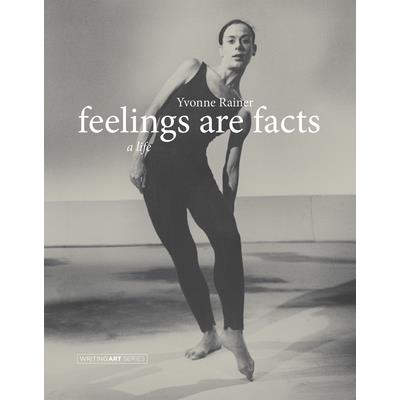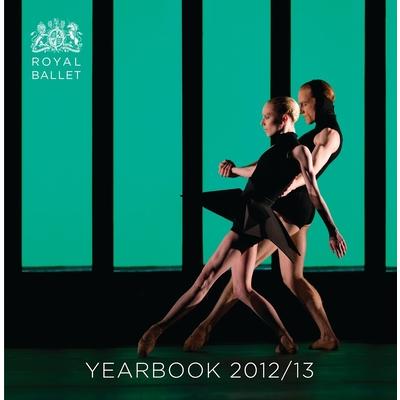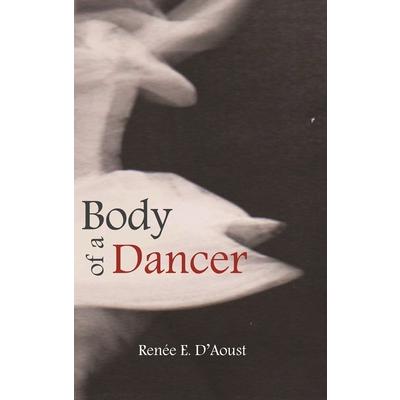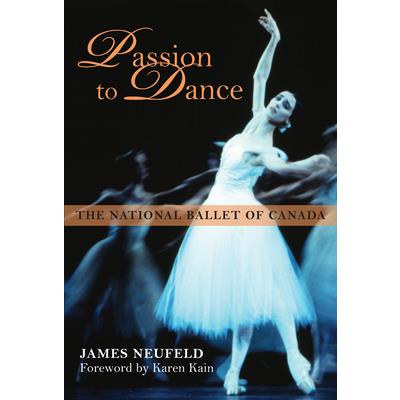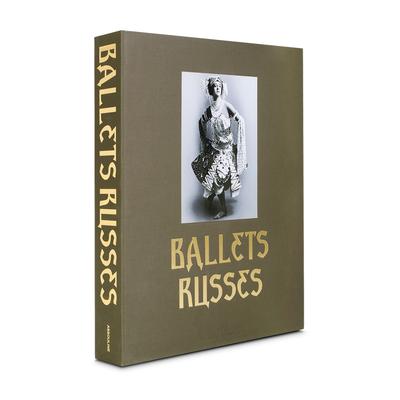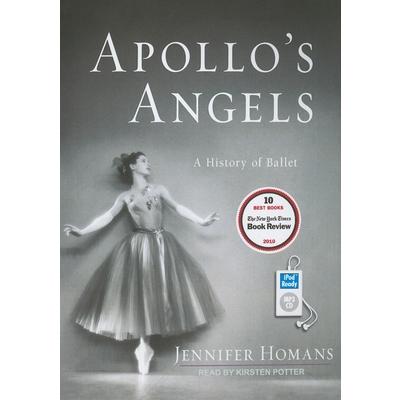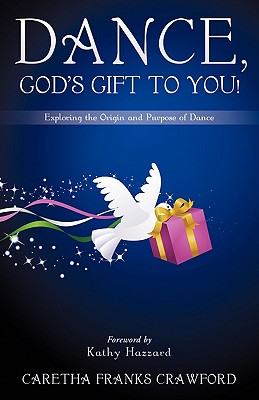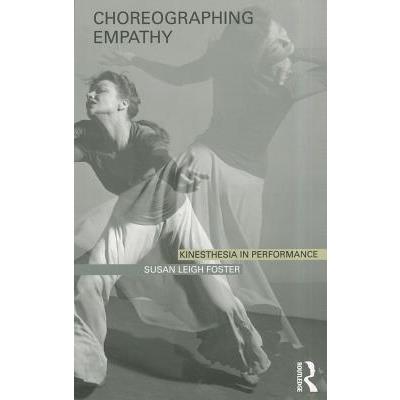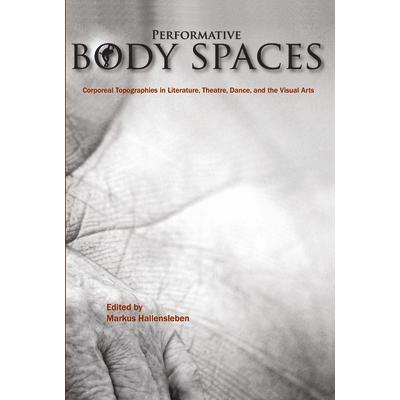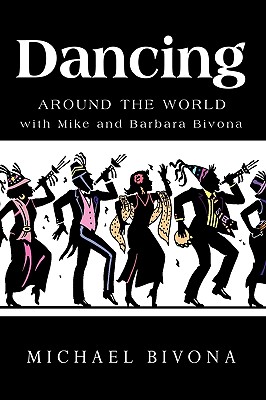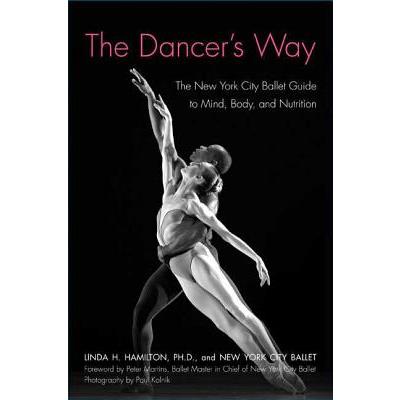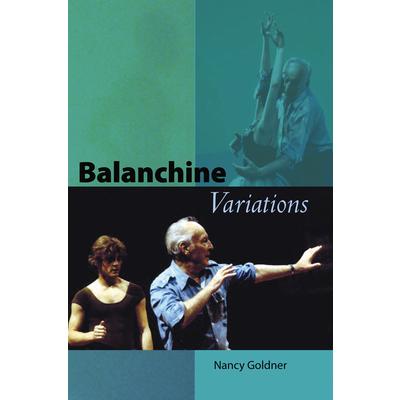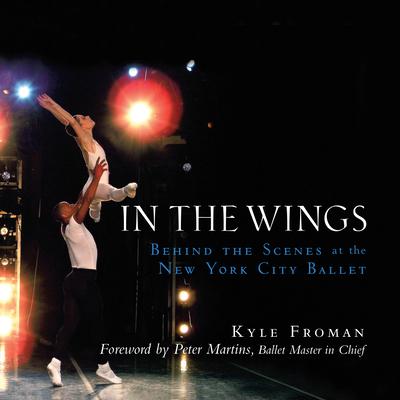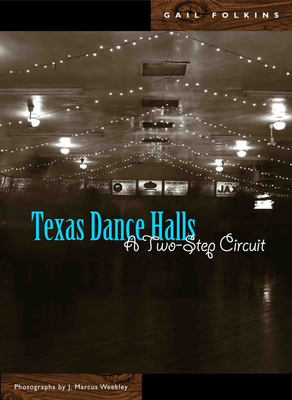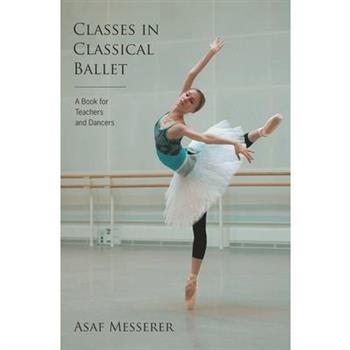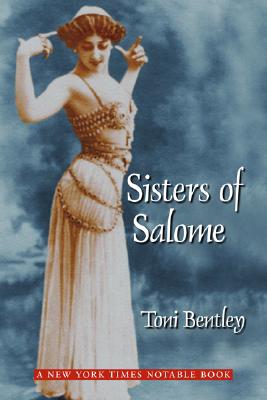Ballroom!
"Gorgeous lines, exquisite beauty, and drama delight--and that is just in the dressing room. . . . Ballroom! takes the reader on an extraordinary journey moving with Sharon in and through her competitions and life as a performer. A great read and a glorious ride."--Dance Track Magazine "Offers an enlightening inside view of the politics, biases, stresses, and strategies that characterize the competitive ballroom dance scene. . . . Terps of all stripes will relate to Savoy's struggles with partners, costumes, the development of choreographic ideas, musical choices, performance mishaps, and the extreme discipline required of professionals in all forms of dance."--Backstage "Originally trained as a professional ballet dancer under George Balanchine of the prestigious School of American Ballet, Savoy segued into the world of ballroom dancing after being sidelined with an ankle injury, and she never looked back."--For the Love of Books "An incredible story of what it takes to make it in our world of glitz and glamor. . . . Through reading this book, people will see dancers in a new light."--Elena Grinenko, World and National Champion "Reminds us all that passion and dedication will attract the circumstances and guidance necessary to see a heartfelt desire come true."--Denis Tremblay, two-time winner, Blackpool Dance Festival, British Professional Rising Star Latin Championships "A great story, told with emotion."--John Kimmins, founder, National Dance Council of America
Ballerina
Throughout her history, the ballerina has been perceived as the embodiment of beauty and perfection -- she is the feminine ideal. But the reality is another story. Beginning with the earliest ballerinas, who often led double lives as concubines, Deirdre Kelly goes on to review the troubled lives of 19th-century ballerinas, who lived in poverty and worked under torturous and even life-threatening conditions. In the 20th century, George Balanchine created a contradictory ballet culture that simultaneously idealized and oppressed ballerinas, and many of his dancers suffered from anorexia and bulimia or underwent cosmetic surgery to achieve the ideal ethereal form. At the beginning of the 21st century, ballerinas are still underpaid, vulnerable to arbitrary discrimination and dismissal, and expected to bear pain stoically -- but much of this is beginning to change. As Kelly examines the lives of some of the world's best ballerinas, she argues for a rethinking of the world's most graceful dance form -- a rethinking that would position the ballerina at its heart, where she belongs. Highlighting the work of such great ballerinas such as Anna Pavlova, Isadora Duncan, Suzanne Farrell, Gelsey Kirkland, and Evelyn Hart Kelly illustrates how the world of ballet is slowly evolving.
Feelings Are Facts
Memoir by the avant-garde dancer, choreographer, and filmmaker recounting her childhood years, sexual misadventures, and artistic explorations.If you're interested in Plato, you're reading the wrong book. If you're interested in difficult childhoods, sexual misadventures, aesthetics, cultural history, and the reasons that a club sandwich and other meals--including breakfast--have remained in the memory of the present writer, keep reading.--from Feelings Are Facts In this memoir, dancer, choreographer, and filmmaker Yvonne Rainer traces her personal and artistic coming of age. Feelings Are Facts (the title comes from a dictum by Rainer's one-time psychotherapist) uses diary entries, letters, program notes, excerpts from film scripts, snapshots, and film-frame enlargements to present a vivid portrait of an extraordinary artist and woman in postwar America. Rainer tells of a California childhood in which she was farmed out by her parents to foster families and orphanages, of sexual and intellectual initiations in San Francisco and Berkeley, and of artistic discoveries and accomplishments in the New York City dance world. Rainer studied with Martha Graham and Merce Cunningham in the late 1950s and early 1960s, cofounded the Judson Dance Theater in 1962, hobnobbed with New York artists including Robert Rauschenberg, Robert Morris (her lover and partner for several years), and Yoko Ono, and became involved with feminist and antiwar causes in the 1970s and 1980s. Rainer writes about how she constructed her dances--including The Mind Is a Muscle and its famous section, Trio A, as well as the recent After Many a Summer Dies the Swan--and about turning from dance to film and back to dance. And she writes about meeting her longtime partner Martha Gever and discovering the pleasures of domestic life.
The Body of the People
The Body of the People is the first comprehensive study of dance and choreography in East Germany. More than twenty years after the fall of the Berlin Wall, Jens Richard Giersdorf investigates a national dance history in the German Democratic Republic, from its founding as a Communist state that supplanted the Soviet zone of occupation in 1949 through the aftermath of its collapse forty years later, examining complex themes of nationhood, ideology, resistance, and diaspora through an innovative mix of archival research, critical theory, personal narrative, and performance analysis. Giersdorf looks closely at uniquely East German dance forms--including mass exercise events, national folk dances, Marxist-Leninist visions staged by the dance ensemble of the armed forces, the vast amateur dance culture, East Germany's version of Tanztheater, and socialist alternatives to rock 'n' roll--to demonstrate how dance was used both as a form of corporeal utopia and of embodied socialist propaganda and indoctrination. The Body of the People also explores the artists working in the shadow of official culture who used dance and movement to critique and resist state power, notably Charlotte von Mahlsdorf, Arila Siegert, and Fine Kwiatkowski. Giersdorf considers a myriad of embodied responses to the Communist state even after reunification, analyzing the embodiment of the fall of the Berlin Wall in the works of Jo Fabian and Sasha Waltz, and the diasporic traces of East German culture abroad, exemplified by the Chilean choreographer Patricio Bunster.
Anna Pavlova
The great ballerina Anna Pavlova (1881-1931) began her career with the Imperial Russian Ballet in 1909, moved to Paris to dance with Vaslav Nijinsky in Sergei Diaghilev's famous Ballets Russes, and formed her own dance company in London in 1912. Like celebrities of today, she toured the world, endorsed beauty products and department stores, appeared in fashion magazines, and even made a Hollywood movie. But her passion was always ballet, which she sought to bring to as wide an audience as possible. Many of the works she brought with her from Russia are regarded as the foundation of today's classic ballet repertoire. Created to celebrate the centenary of the founding of Pavlova's English dance company, this book offers an intimate look at the legendary ballerina whose name still resonates 80 years after her death. This richly illustrated book has now been revised to include an entirely new chapter on Pavlova's tours to North and South America, as well as new images of Pavlova with Charlie Chaplin. Anna Pavlova: Twentieth-Century Ballerina takes a fascinating look at the iconic star whose career spanned Russia and the West in the first half of the century, showing how she became the most influential dancer of the time.
Royal Ballet Yearbook 2012/13
The newest edition of the Royal Ballet Yearbook follows on the success of the previous editions. Featuring lavish photographs of last season, a special preview of the upcoming season, and lively and informative articles, this yearbook is an essential and richly illustrated companion to the Royal Ballet.
Nijinsky
Vaslav Nijinsky stands alone as a dancer, interpretive artist, and choreographic pioneer. His breathtaking performances with the Ballet Russe took Western Europe by storm, and his avant-garde choreography for The Afternoon of the Faun and Rite of Spring caused riots in the streets. Both are now regarded as the foundation of modern dance.Through his liaison with the great impresario Diaghilev, he worked with the artistic elite of the time--Benois, Bakst, Debussy, Fokine, Karsavina, Pavlova, Stravinsky--and lived in an atmosphere of perpetual hysteria, glamour, and intrigue. When he married a Hungarian aristocrat, Diaghilev abruptly dismissed him from the Ballet Russe. Five years later, he was declared insane. The fabulous career of the greatest dancer who ever lived was over.Drawing on personal conversations with countless people who knew and worked with Nijinsky, including his sister and famed choreographer Bronislava Nijinska, Richard Buckle has written the definitive biography of Nijinsky, now back in print for the first time in more than forty years.
Tales of the Jazz Age
Tales of the Jazz Age is a collection of eleven short stories by F. Scott Fitzgerald. Divided into three separate parts, according to subject matter, it includes one of his better-known short stories, "The Curious Case of Benjamin Button". Several of the stories had also been published earlier, independently, in either The Metropolitan, Saturday Evening Post, Smart Set, Collier's, Chicago Tribune, or Vanity Fair.
Body of a Dancer
2011 Finalist for ForeWord Review's Book of the Year Award in Autobiography/Memoir"A remarkably clear-eyed descent into New York's surreal world of modern dance peopled by the obsessed, dispossessed, sexy, suicidal, brutal, broke, and absurd."--Lance Olsen, author of Nietzsche's KissesThe award-winning writer Ren矇e E. D'Aoust draws from her experiences as a modern dancer in New York during the nineties. Her luminous prose spotlights this passionate, often brutal world. Trained at the prestigious Martha Graham Center, D'Aoust intertwines accounts of her own and other dancers' lives with essays on modern dance history. A dancer's body, scarred, strained, and tough, bears witness to the discipline demanded by the art form. Body of a Dancer provides a powerful, acidly comic record of what it is to love, and eventually leave, a life centered on dance."D'Aoust describes in great candor and plainspoken wit all the idiosyncrasies of dancers and their necessary sacrifices: ""Leave home, leave country, forget secondary education, forget any guarantee of a stable income, destroy na簿ve innocence about the body""--Shelf Awareness"With exquisite description, absolute honesty, and a clear compelling voice, Body of a Dancer offers an unforgettable account of one artist's bittersweet journey."--Dinty W. MooreRen矇e E. D'Aoust's essays have been featured as notable essays in Best American Essays in 2006, 2007, and 2009. Her nonfiction work has been included in the anthology Reading Dance, edited by Robert Gottlieb and nominated for the Pushcart Prize. D'Aoust is the recipient of an NEA Dance Criticism
Apollo's Angels
NEW YORK TIMES BESTSELLER - NAMED ONE OF THE BEST BOOKS OF THE YEAR BY THE NEW YORK TIMES BOOK REVIEW, LOS ANGELES TIMES, SAN FRANCISCO CHRONICLE, AND PUBLISHERS WEEKLY For more than four hundred years, the art of ballet has stood at the center of Western civilization. Its traditions serve as a record of our past. Lavishly illustrated and beautifully told, Apollo's Angels--the first cultural history of ballet ever written--is a groundbreaking work. From ballet's origins in the Renaissance and the codification of its basic steps and positions under France's Louis XIV (himself an avid dancer), the art form wound its way through the courts of Europe, from Paris and Milan to Vienna and St. Petersburg. In the twentieth century, 矇migr矇 dancers taught their art to a generation in the United States and in Western Europe, setting off a new and radical transformation of dance. Jennifer Homans, a historian, critic, and former professional ballerina, wields a knowledge of dance born of dedicated practice. Her admiration and love for the ballet, as Entertainment Weekly notes, brings "a dancer's grace and sure-footed agility to the page."
Passion to Dance
This is the story of the National Ballet of Canada - the people, the determination, and how at sixty it is still creating new work while still representing the classics. Passion to Dance is the story of the National Ballet of Canada - the people who dreamt the company into existence, the determination needed to keep it afloat, the bumps on the road to its success, and above all, its passion for dance as a living, evolving art form. From catch-as-catch-can beginnings - borrowed quarters, tiny stages, enormous dreams the National Ballet has emerged as one of North America's foremost dance troupes. The company at sixty is a company of its time, engaged in creating challenging new work, yet committed to maintaining the classics of the past, favourites like Swan Lake, The Nutcracker, and The Sleeping Beauty. One hundred and fifty photographs from the company's archives illustrate this definitive history, filled with eyewitness accounts, backstage glimpses, and fascinating detail. This is a record of one of Canada's boldest cultural experiments, a book to enjoy now and keep forever.
Dance, God’s Gift to You!
"The aroma of God is being sensed throughout the earth, awakening those who God has ordained to carry forth the anointing of the dance in the earth." In the 21st century church, God is calling ministers of the dance in record numbers to fulfill His purpose-revealing His glory in the earth. This calling has prompted a myriad of questions in the minds of leaders and laypersons in the body of Christ. In Dance, God's Gift to You, Dr. Crawford presents a fresh, clear biblical understanding of how God views the dance, elaborating on how and why dance should be used in the worship experience. This book will answer many questions and help open the eyes of your understanding to: - The origin and purpose of the dance - How dance is used as a powerful weapon against the enemy - How dance is used to restore and bring order out of chaos - Why God takes pleasure in the dance - How to pursue the presence of God through the dance - The healing qualities of the dance - What God expects of His ministers of the dance May this book stir the gift of dance in you and cause you to "move out" in obedience to the call of God on your life! Dr. Caretha Franks Crawford is the founding pastor and apostle of The Gateway to Wholeness Church Ministries Largo, Md. She travels internationally preaching and teaching the gospel. Dr. Crawford is also the founder and CAO of In Pursuit of His Presence Worship Institute. She has a bachelor's degree in Early Childhood Education from Winston-Salem State University and has earned Master of Divinity and Doctor of Ministry degrees. She is the CEO and publisher of Kingdom Greetings 4U(R), a line of handmade Christian greeting cards.
Choreographing Empathy
"This is an urgently needed book - as the question of choreographing behavior enters into realms outside of the aesthetic domains of theatrical dance, Susan Foster writes a thoroughly compelling argument." - Andr矇 Lepecki, New York University "May well prove to be one of Susan Foster's most important works." - Ramsay Burt, De Montford University, UK What do we feel when we watch dancing? Do we "dance along" inwardly? Do we sense what the dancer's body is feeling? Do we imagine what it might feel like to perform those same moves? If we do, how do these responses influence how we experience dancing and how we derive significance from it? Choreographing Empathy challenges the idea of a direct psychophysical connection between the body of a dancer and that of their observer. In this groundbreaking investigation, Susan Foster argues that the connection is in fact highly mediated and influenced by ever-changing sociocultural mores. Foster examines the relationships between three central components in the experience of watching a dance - the choreography, the kinesthetic sensations it puts forward, and the empathetic connection that it proposes to viewers. Tracing the changing definitions of choreography, kinesthesia, and empathy from the 1700s to the present day, she shows how the observation, study, and discussion of dance have changed over time. Understanding this development is key to understanding corporeality and its involvement in the body politic.
Streb
An inspiring memoir and self-help guide to greatness by the dancer Mikhail Baryshnikov calls "fearlessness and intelligence combined . . . potent and beautiful." Called "the Evel Knievel of Dance," Elizabeth Streb has been pushing boundaries and testing the potential of the human body since childhood. Can she fly? Can she run up walls? Can she break through glass? How fast can she go? With clarity and humor--and with her internationally-renowned dance troupe STREB--she continues to investigate what movement truly is and has come to these conclusions: It's off the ground! It creates impact! And it hurts trying to stop! Here, Streb combines memoir and analysis to convey how she became an extreme action dancer and choreographer, developing a form of movement that's more NASCAR than modern dance, more boxing than ballet, and more than most people can handle "in this dizzying, inspirational self-help" books (Publishers Weekly, starred review).
Dancing Around the World With Mike and Barbara Bivona
From Buenos Aires to Paris to New Orleans, Mike and Barbara Bivona have traveled and danced throughout the world. And in this memoir and travelogue, these two dance aficionadas Ballroom dancers for more than twenty years, the Bivonas have traveled extensively while honing their dancing skills and meeting fellow dancers. Dancing Around the World with Mike and Barbara Bivona provides detailed accounts of their experiences in Argentina, Paris, Hawaii, Italy, the Catskill Mountains of New York, the Caribbean, and South Florida, as well as other destinations. This account not only includes dancing details, but also shares the history and flavor of the exciting locales they have visited. Augmented with photographs, Dancing Around the World with Mike and Barbara Bivona also includes background information on the art of ballroom dancing, a few dance lessons, biography of select dancers who have performed on the television show Dancing with the Stars, current ballroom dancing philosophy, and information about the intellectual benefits gained from dancing.
Dancing Around the World With Mike and Barbara Bivona
From Buenos Aires to Paris to New Orleans, Mike and Barbara Bivona have traveled and danced throughout the world. And in this memoir and travelogue, these two dance aficionados share their adventures and experiences. Ballroom dancers for more than twenty years, the Bivonas have traveled extensively while honing their dancing skills and meeting fellow dancers. Dancing Around the World with Mike and Barbara Bivona provides detailed accounts of their experiences in Argentina, Paris, Hawaii, Italy, the Catskill Mountains of New York, the Caribbean, and South Florida, as well as other destinations. This account not only includes dancing details, but also shares the history and flavor of the exciting locales they have visited. Augmented with photographs, Dancing Around the World with Mike and Barbara Bivona also includes background information on the art of ballroom dancing, a few dance lessons, biographies of select dancers who have performed on the television show Dancing with the Stars, current ballroom dancing philosophy, and information about the intellectual benefits gained from dancing. Preview: Daniel Trenner hosted a party at his apartment one afternoon, which lasted until eight at night. He has a huge rooftop terrace overlooking the beautiful cupolas of Buenos Aires, where we were treated to a three-piece Tango band for our dancing pleasure and a professional Tango show. The elite of the Tango world were present and politely asked many of us to dance; what a wonderful experience to be floating on a strategically located rooftop in the heart of one of the most beautiful cities in the world, being led by world famous dancers, to the music of the seductive Argentine Tango. My OH MY!!... We talked, lived, and danced Tango for eleven days, and remained in Buenos Aires for a few extra days after our group left so we could do some sightseeing. We went to the mausoleum of Eva Peron, the famous antique and street fair in San Telmo, and, of course, we went to the city of Caminito, made famous by a song of the same name by the immortal singer, Carlos Gardel. ... We loved to Tango before we went to Argentina. We fell in love with it in Buenos Aires.
Advanced Principles in Teaching Classical Ballet
Staying true to the Russian Academy of Ballet (St. Petersburg) pedagogy he has taught for forty years, Advanced Principles in Teaching Classical Ballet is a continuation of the work John White began in his first book. Designed for teachers, company directors, and advanced dancers, the book explores the importance of disciplined dancing, choreography, acting, conditioning, and performance. White's writing style is as straightforward as he is unyielding in his insistence on excellence. White also confronts serious issues dealing with the future of classical ballet and what is needed to maintain its rightful place as an important theater art. He argues that theatergoers with high expectations deserve nothing less than masterful choreography performed by superior dancers. Decidedly not a primer, Advanced Principles in Teaching Classical Ballet is a must-read for anyone serious about teaching and performing ballet.
The Dancer's Way
In the current dance scene, performers contend with choreography that involves extreme dance, multiple techniques, and acrobatic moves, exemplified in the popular reality television show, "So You Think You Can Dance." The dilemma for aspiring professionals is that dance class no longer provides sufficient preparation for performing at this level. Dancers who want to achieve their best, avoid injury, and perform at their peak will welcome the insight and advice in the pages of The Dancer's Way. The world-renowned New York City Ballet developed their proven wellness program to help dancers reach their potential without compromising their health. As one of the key designers of this program, former dancer and clinical psychologist Linda Hamilton, Ph.D. provides the essential principles of wellness that will help you achieve your goals in all levels and forms of dance. These include keeping yourself physically healthy, nutritionally sound, and mentally prepared as a dancer. New York City Ballet's celebrated program, here for the first time in book form, highlights every tool you'll need to stay in great shape.
Balanchine Variations
The literature on Balanchine is vast, but it is primarily biographical. Balanchine Variations is the first book to concentrate on the ballets themselves, providing critical analysis and detailed descriptions of what the dancers actually do. Beginning with Apollo (1928), Balanchine's first extant work, and ending with one of his last ballets, Ballo della Regina (1978), Nancy Goldner offers detailed insights into more than twenty individual ballets. Based on lectures given across the United States, under the auspices of the Balanchine Foundation, they are intended to illuminate his art. Goldner discusses the history of each ballet, places each in the context of Balanchine's life and sensibility. She also addresses his taste in music and whether his style can be considered particularly American. The ballets Balanchine choreographed for the New York City Ballet are danced by companies around the world, and this innovative book is sure to become an indispensable guide to dancers and spectators alike.
In the Wings
Here is New York City Ballet as it really is- the good, the not so good, and the majestically beautiful. It's a true story, and it's told by someone who can honestly claim that he was there.
In the Wings
Here is New York City Ballet as it really is- the good, the not so good, and the majestically beautiful. It's a true story, and it's told by someone who can honestly claim that he was there.
Texas Dance Halls
Texas shows its best moves in dance halls that dot its landscape. Wherever they've found fiddlers and dance floors, Texans have been tickled into motion. And for a century and a half, they've been kicking up dust in dance halls across the state. Writing about the eighteen she knows best, Gail Folkins celebrates how these halls still bring people together and foster joy. Folkins etches portraits of proprietors who give space for music and dancing, of musicians who furnish the soundtrack for dramas and comedies that play out across hardwood or concrete floors, and of people who come to dance, listen, or simply share the experience with friends and neighbors. Paired with Marcus Weekley's photographs, some whirling and some dreamy, they capture beat and motion, even the scent of sawdust on the floor. Drawn in, we witness daytime preparations for evenings to come, and the quiet that returns after the dancers go home and the musicians have packed up for the night. Moving from Twin Sisters near New Braunfels to legendary Luckenbach, we meet the third generation in a family of makers of music and keepers of dance halls. And then there are the descendants of Czech Catholic settlers coming to dance under the giant letters KJT (Katolika Jednota Texaska). At Coupland Dance Hall, we sense ghostly apparitions of pioneer women in long skirts. Very much in the twenty-first century, we share a dance floor with tourists and university types among the kitschy accoutrements at Austin's Broken Spoke.
Dance Anecdotes
Mindy Aloff, a leading dance critic who has written for The Nation, The New Republic, and The New Yorker, has brought together here a marvelous book of stories by and about dancers--entertaining and informative anecdotes that capture the boundless variety and richness of dance as an art, a tradition, a profession, a pastime, an obsession, a reality, and, for the dancer, an ideal. George Balanchine is here, and so are Fred Astaire, Margot Fonteyn, Rudolf Nureyev, Savion Glover, Martha Graham, and Lola Montez, and also stars from other arts--such as Akira Kurosawa and Bob Dylan--who have spoken about dancing with wit or illumination. There are stories about Irene and Vernon Castle, Cyd Charisse and Gene Kelly, Bob Fosse and Gwen Verdon, Paul Taylor and Mark Morris. We read about the charisma and spontaneity of Anna Pavlova, about the secret to Vaslav Nijinsky's success ("I worked like an ox and I lived like a martyr"), about George Balanchine racing to a union dispute with a bag of dimes. Many of the stories are amusing, but some are rueful, even sad, and a few are dark. Aloff concludes the volume with an essay about how dancing has been able to record its past, sometimes over centuries, and about how the art of the dancer, apparently as ephemeral in performance as cloud patterns, turns out, when conditions are hospitable, to be much more hardy and resilient than many people suppose. A glorious promenade of stories that stretch as far back as classical times and as far afield as Japan, India, and Java, this superb collection will be treasured by everyone who loves dance, whether young or old.
Dancing into the Unknown
Tamara Tchinarova was born in Romania in 1919 and began her dance training in Paris with emigr矇 ballerinas from the Imperial Russian Ballet. She danced professionally in Europe with the touring Ballet Russes companies that emerged in the 1930s after the death of the entrepreneur Serge Diaghilev, and she went to Australia in 1936 with the Ballet Russes de Monte- Carlo, returning in 1938 with the Covent Garden Russian Ballet. In Australia during those first two tours by the Russian Ballet she made a strong impression as Action in Leonide Massine's first symphonic ballet Les Pr矇sages. She was also admired for her portrayal of Thamar in Michel Fokine's dramatic ballet, and was praised for her dancing in demi-character roles in ballets such as Le beau Danube. In 1939, at the conclusion of the Covent Garden Russian Ballet tour, along with a number of her colleagues, Tchinarova elected to stay in Australia where she met and married the actor Peter Finch and worked with him on a number of films before leaving Australia to make her home in London. But Finch had caught the eye of the glamorous actress Vivien Leigh, wife of Sir Laurence Olivier, and the love triangle that developed was to have devastating consequences. This fascinating autobiography highlights Tamara's remarkable life in Romania and her worldwide dancing career, the tempestuous marriage to Peter Finch and her involvement in his notorious affair with Leigh, through to her subsequent career as adviser and interpreter for many Russian ballet companies.
Classes in Classical Ballet
A companion guide to one of the bestselling Limelight Edition titles, this book by Asaf Messerer, a founder of what has become known as the Bolshoi School, is one of the most celebrated manuals of classic dance instruction in the world. Messerer has gained an international reputation for his classes in classical technique-models of invention and well-rounded exercise, stressing both precision and fluid artistic control. Nearly 500 photographs of principal Bolshoi dancers illustrate the positions and steps indicated, and an introductory section by Messerer outlines his basic plan and philosophy of teaching.
Flesh for Fantasy
With a recent burst of feature films, documentaries, and books on strippers, the business of exotic dancing is hotter than ever. Over the last decade there has been a steadily expanding interest in exotic dance, from its role as an "art form" to its benefits as a means of exercise. While the breadth of discussion generated on this topic has expanded, the fundamental debate remains the same: are female strippers empowering themselves or allowing themselves to be exploited? With her follow-up to Jane Sexes It Up: True Confessions of Feminist Desire, M. Lisa Johnson moves beyond the old debates and gives the reader a glimpse of what exotic dancing is like through the eyes of the stripper. The essays in Flesh for Fantasy cover everything from workplace policies and conditions, legal restrictions, customer behavior, and the struggle to overcome the stereotypes associated with the profession.
Ballet 101
Veteran dance writer Robert Greskovic's comprehensive handbook on how to watch and appreciate the ballet is now available in this new edition. It includes a complete analysis of sixteen important and popular ballets, from Swan Lake to Twyla Tharp's Push Comes To Shove., As Mikhail Baryshnikov states in the book's foreword: "All the things that ballet fans talk about at intermission, while newcomers stand there wondering what they mean: those things are here...(Robert Greskovic) has been thinking about ballet --- watching it, reading, writing, and talking about it --- day after day for more than thirty years. He knows it through and through. Now he shares his knowledge."
Sisters Of Salome
The origins of the art of exotic dancing lie in English drama and Viennese opera: Oscar Wilde's 1893 play Salome, and Richard Strauss's 1905 opera based on it, brought onto the stage a female character who captured and dominated the audience with the raw power of her naked body. Her Dance of the Seven Veils shocked and fascinated, and Salome became a pop icon on both sides of the Atlantic. Toni Bentley explores how four influential women embraced the persona of the femme fatale and transformed the misogynist image of a dangerously sexual woman into a form of personal liberation. Toni Bentley danced with George Balanchine's New York City Ballet for ten years. Her books include Winter Season: A Dancer's Journal, Holding On to the Air, Costumes by Karinska, and The Surrender: An Erotic Memoir.
Round About The Ballet
Anyone who has ever seen a live performance of ballet knows the thrill of seeing larger-than-life figures on stage dancing in ways that seem superhuman. What are these dancers like beyond the footlights? How have they acquired such artistry and technique? What are the joys and difficulties in sustaining their careers? What dreams would they like to fulfill as performers? Round About the Ballet profiles the stars of the top New York City ballet companies: American Ballet Theatre and the New York City Ballet. Selected by Roy Round, one of the world's leading dance photographers, the dancers profiled represent the very best in ballet today. The dancers are brought to life through stories of their lives, real-life interviews, and the stunning photgraphs of Roy Round. This book is for ballet fans, dance students, and people who are curious about the performing arts.







